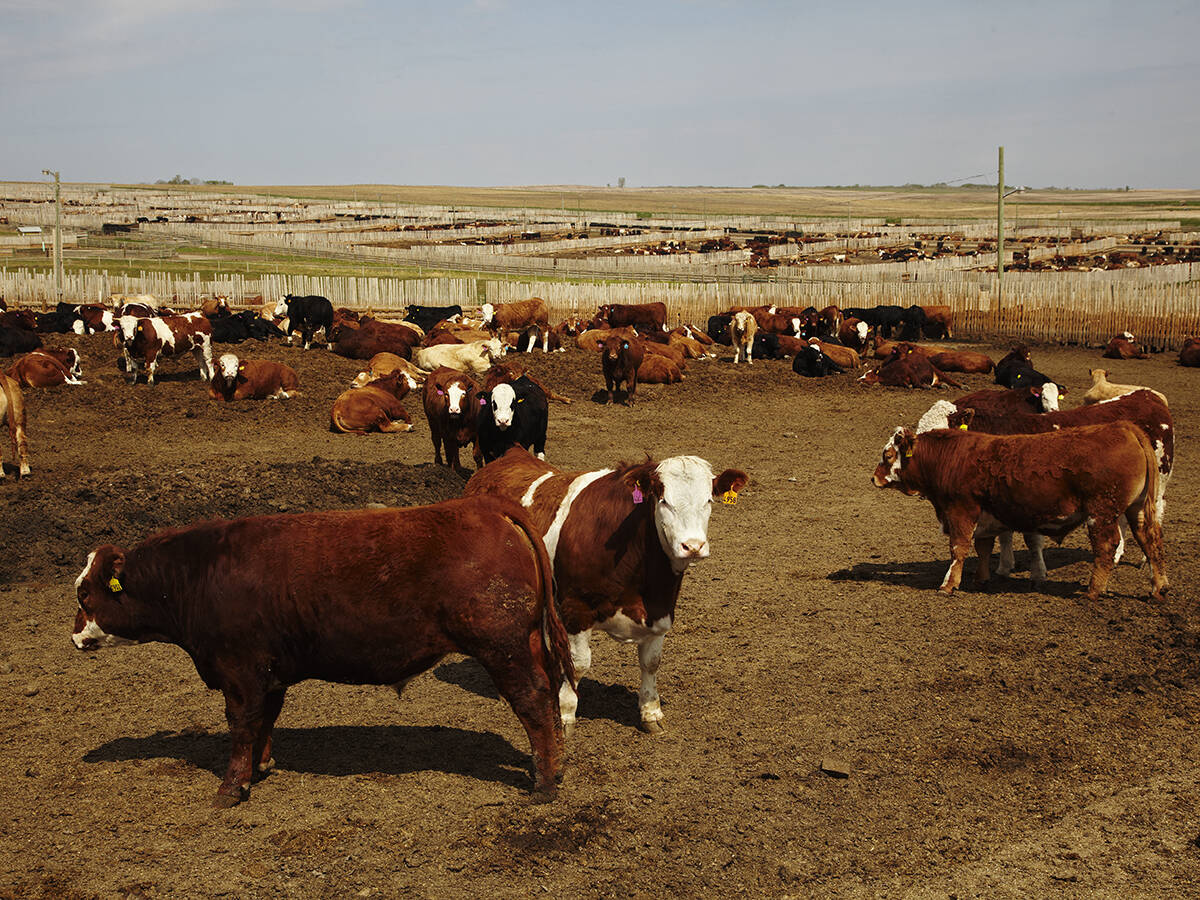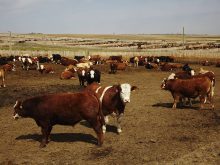This cattle market information is selected from the weekly report from Canfax, a division of the Canadian Cattlemen’s Association. More market information, analysis and statistics are available by becoming a Canfax subscriber by calling 403-275-5110 or at www.canfax.ca.
Good fed demand
Alberta direct cattle sales saw moderate volume cash trade last week, with dressed prices steady to firmer than the previous week from $414-$415 per hundredweight delivered.
Good demand and manageable supplies fuelled a strong $7 per cwt. Alberta/Nebraska cash basis last week. Weighted average Alberta steer prices firmed around 50 cents per cwt. higher than the previous week to $247.84, the strongest steer prices seen last week in North America.
Read Also

Canfax cattle market report – November 13, 2025
The Canfax cattle market report for November 13, 2025. Fed & feeder cattle prices, butcher cow trends, and cutout market insights.
Western Canadian fed slaughter for the week ending June 17 was one percent larger than the previous week to 38,953 head. Year-to-date western fed slaughter was down six percent from the same week last year, totalling 962,141 head.
Fed cattle/cow exports to the United States for the week of June 10 were generally steady with the previous week at 6,210 head and were down 18 percent compared with a year ago.
Scattered light Ontario trade saw dressed prices $5 per cwt. lower than the previous week, marked at $410 per cwt. delivered. A handful of heifers traded to the U.S. at US$310 per cwt. delivered, which worked back to around $243 per cwt. live f.o.b. the feedlot.
The U.S. fed market dipped lower last week on softer beef demand and anticipated increased market supplies.
In the U.S., light southern trade saw prices US$2 per cwt. lower than the previous week at $180 per cwt. Light to moderate northern live trade from $182-$186 per cwt. was generally $3-$4 per cwt. lower than the previous week, with most sales reported at $183.
Nebraska dressed trade was around $6 per cwt. lower than the previous week at $290 per cwt. delivered. U.S. steer carcass weights for the week ending June 10 were five pounds lower than the previous week at 882 lb. and were three lb. heavier than a year ago.
Cows trend lower
Based on five-year and 20-year indices, butcher cow prices usually see spring highs in late May/early June. Four weeks ago, D2 cow prices set a high of $157 per cwt., and since then have declined $5 per cwt. Last week D2s averaged $151.83 and D3s averaged $135.50 per cwt.
Ontario and U.S. prices have also trended lower. Larger volumes of non-fed cattle have been noted through commercial auction facilities.
Western Canadian cow slaughter for the week ending June 17 totalled slightly more than 6,400 head, the largest slaughter since March. For the middle of June, this stands as the third largest cow slaughter over the past 12 years. Only 2019 and 2021 were larger.
Over the past five weeks, butcher bull prices have averaged from $161-$164 per cwt.
Based on Statistics Canada data, Canadian cow exports to the U.S. for April total slightly more than 8,800 head, 19 percent lower than last year. This is the smallest monthly cow export volume since June 2021.
Feeders pull back
Auction volumes are ample for this time of year. Last week, there was a significant offering of heavier weight heifers, while steer numbers continue to be light. For the first three weeks in June, Alberta auction volumes are the largest since 2008.
Calves and lightweight stocker prices traded lower, while heavier weight feeders continue to hover near annual highs. This is the first significant pull back in the calf market this year, dropping $11-$16 per cwt. over the past couple of weeks.
Alberta 550 lb. steer and heifer calves traded at the lowest point since mid-April. Since early June, the nearby August feeder contract has declined five to six percent, while 850 lb. feeder cattle cash prices have traded on either side of $290 per cwt.
As a result, the Alberta feeder cash-to-futures basis levels have strengthened, going from -$41 per cwt. in early June to -$12 per cwt. last week. Basis levels are now in line with the 10-year average.
With recent rain, cow/calf pair volumes have started to moderate. Pair prices have drifted lower over the past month. This week, sales were reported from $2,600-$3,400 per pair, averaging $2,800.
Cutouts soften
In U.S. beef trade, cutouts touched US$343 per cwt. June 16 before softening last week. Choice cutouts closed at $334.47 per cwt. Select cutouts closed at $303.90. As of June 22, Choice cutouts were still 26 percent higher than last year and a significant 36 percent higher than the five-year average.














